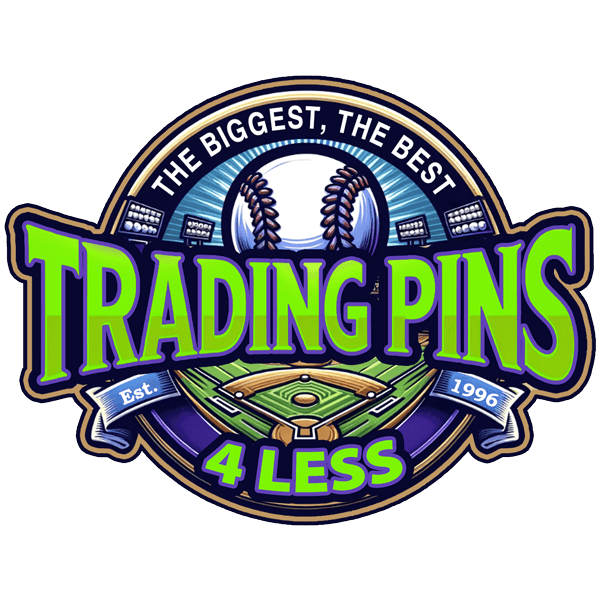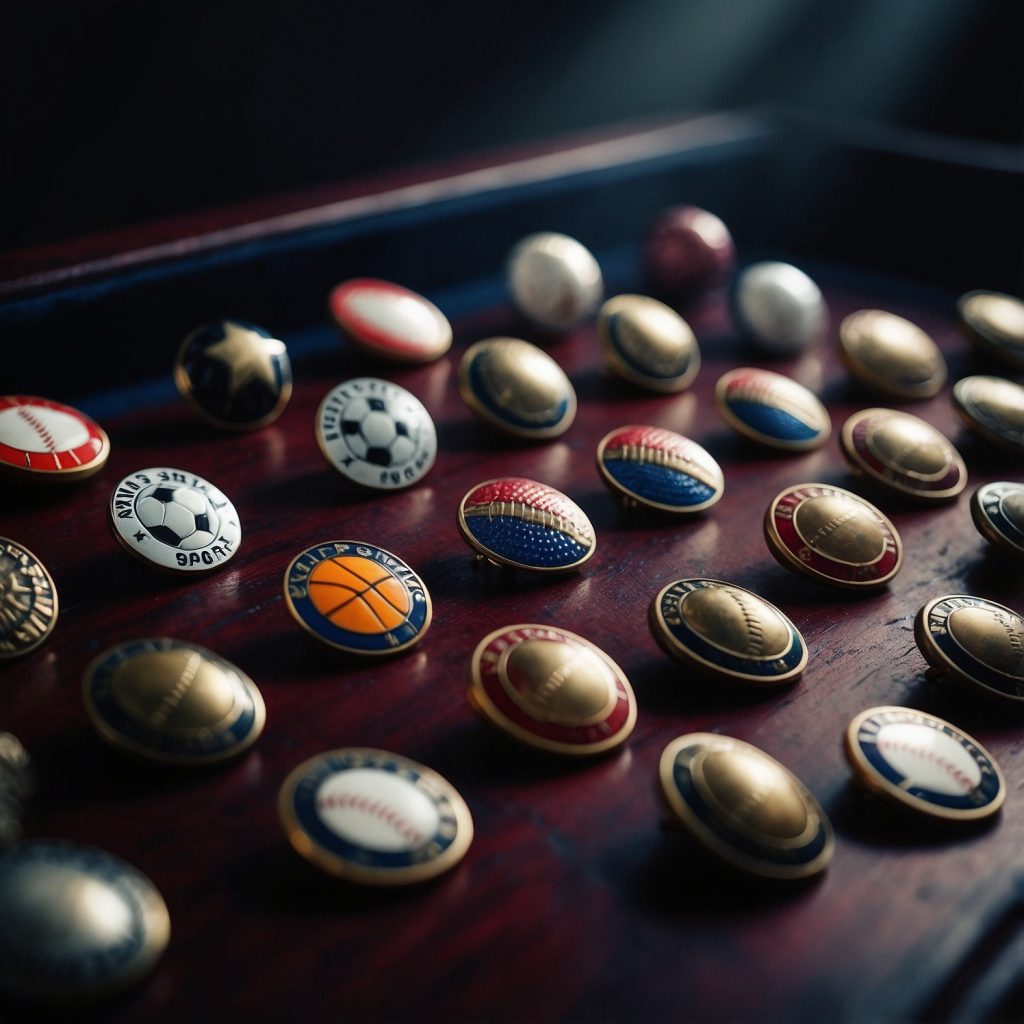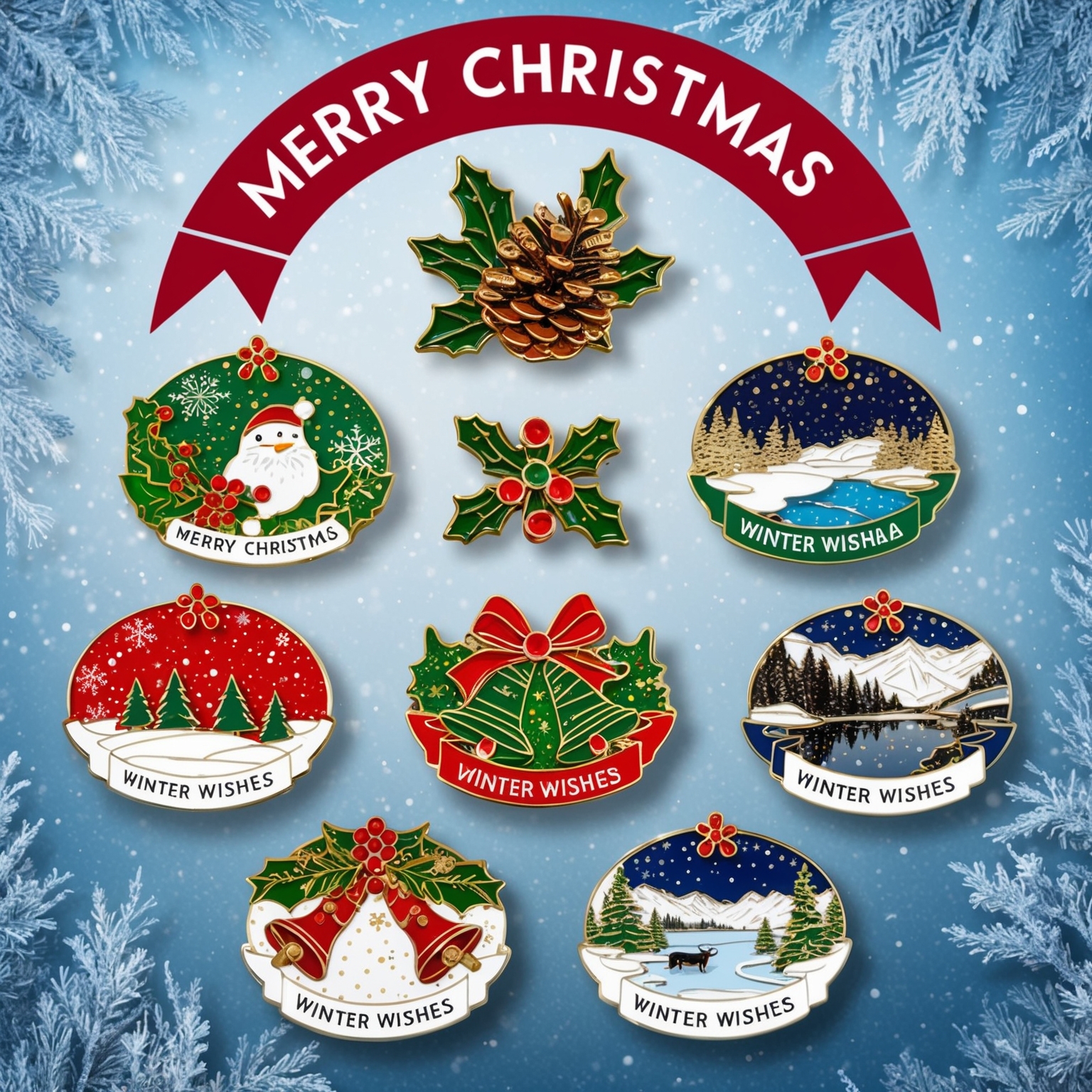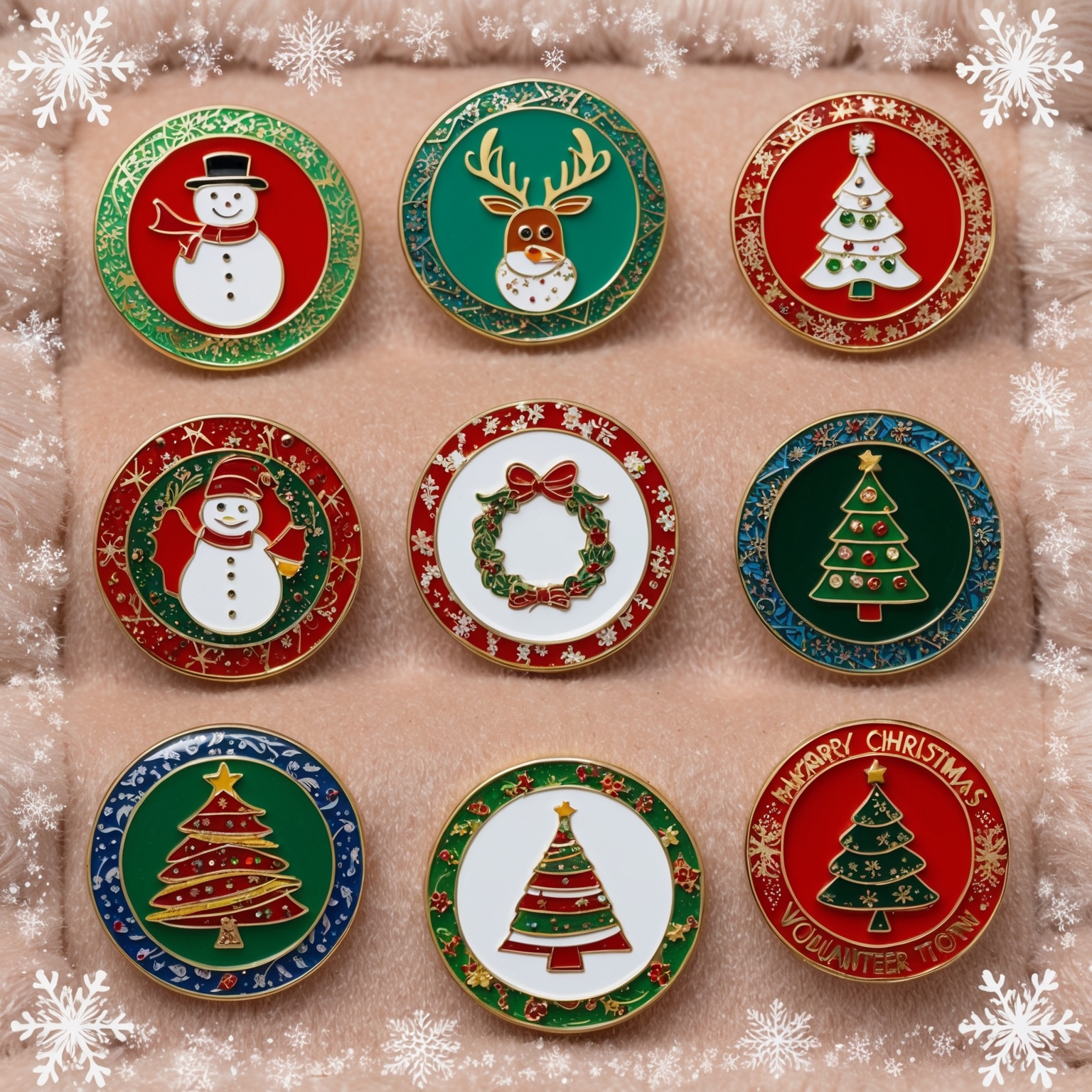In the world of sports, success and achievements are celebrated in many forms—from trophies and medals to banners and public recognition. However, one item that has grown in popularity as a means of celebrating milestones and triumphs is sports trading pins. These small, custom-designed pins not only commemorate important moments in an athlete’s journey but also foster a sense of camaraderie, unity, and pride within teams and among fans.
For decades, sports trading pins have been a staple at sporting events, from local youth leagues to international competitions like the Olympics. Athletes, coaches, and fans alike have embraced these pins as tangible mementos of their participation, achievements, and experiences. Beyond their symbolic significance, sports trading pins have also evolved into highly collectible items, with limited-edition and custom designs becoming sought-after pieces in the world of sports memorabilia.
In this article, we’ll explore how sports trading pins are used to mark milestones, celebrate triumphs, and build lasting connections in the world of athletics. We’ll delve into their history, cultural significance, and design process, and offer insights into how they serve as powerful tools for commemorating achievements on and off the field.
The History of Sports Trading Pins
Before diving into the ways custom trading pins are used to celebrate achievements, it’s important to understand their origins. Trading pins date back to the late 19th and early 20th centuries when they were first used as a form of identification in sports competitions. Over time, their role expanded beyond simple identification, evolving into symbols of pride, achievement, and, eventually, collectible memorabilia.
1. The Early Beginnings
The earliest known use of trading pins in sports can be traced back to the 1896 Olympic Games in Athens, where athletes and officials wore small pins as a form of identification. These pins were exchanged among participants as a gesture of goodwill and sportsmanship. This tradition continued in subsequent Olympic Games, and trading pins soon became a cherished part of the Olympic experience.
As the popularity of sports trading pins grew, their use expanded to other sports competitions, particularly in baseball and Little League tournaments. Teams began creating custom pins featuring their logos, mascots, and colors, which they would trade with other teams during tournaments. This fostered a sense of camaraderie and sportsmanship while also giving players a tangible memento of their participation.
- Tip: When collecting vintage sports trading pins, look for Olympic pins from early Games or rare baseball tournament pins from the mid-20th century. These pins hold historical significance and are often valuable to collectors.
2. The Rise of Youth and Amateur Sports Trading Pins
In the 1950s and 1960s, the tradition of trading pins became especially popular in youth sports, particularly in Little League baseball. As youth tournaments grew in size and significance, teams began creating their own custom-designed pins to represent their team identity. These pins were traded among players, coaches, and fans, serving as both keepsakes and symbols of sportsmanship.
The practice of trading pins became a major part of the tournament experience, with players often collecting pins from opposing teams as a way to commemorate their journey through the competition. By the 1970s and 1980s, pin trading had become a widely embraced tradition in youth sports, not only in baseball but also in soccer, hockey, and other amateur sports.
Today, sports trading pins remain a beloved tradition in youth and amateur sports leagues, with many teams designing unique pins for each tournament or season. Trading pins fosters a sense of community and connection among athletes, even as they compete against one another on the field.
- Tip: Teams participating in tournaments should consider creating custom sports trading pins that incorporate team logos, colors, and mascots. These pins become valuable memorabilia for players and a way to commemorate the event.
How Sports Trading Pins Celebrate Achievements
One of the most significant roles that sports trading pins play is their ability to celebrate and commemorate achievements. Whether it’s a major championship win, an all-star performance, or a player’s individual milestone, trading pins are used to mark these moments and keep the memories alive.
1. Commemorating Team Success
For teams, custom sports trading pins offer a way to commemorate major accomplishments, such as tournament victories, championship titles, and undefeated seasons. Teams often create special-edition pins to celebrate these milestones, using bold designs and colors to reflect the significance of the achievement. These pins are typically distributed to players, coaches, and fans, allowing everyone involved in the success to share in the celebration.
For example, after winning a state championship, a high school football team might design a pin that includes the year, the team’s logo, and a representation of the championship trophy. These commemorative pins become lasting reminders of the hard work, dedication, and teamwork that led to the victory. Players wear their pins with pride, and the pins themselves become valuable keepsakes that represent a defining moment in the team’s history.
In professional sports, trading pins are often used to mark historic team achievements. For example, when a team wins a major league championship, limited-edition trading pins may be released to commemorate the event. Fans can purchase these pins as collectibles, and the pins often appreciate in value over time due to their rarity and significance.
- Tip: When designing commemorative sports trading pins for team achievements, include key details such as the year, the event name, and the team’s logo. Consider using unique shapes or materials to make the pin stand out.
2. Honoring Individual Milestones
In addition to team success, sports trading pins are often used to celebrate individual player milestones and achievements. Whether it’s a player reaching a career milestone, such as 100 goals or 1,000 points, or a standout performance in a single game, pins serve as a way to honor these accomplishments and provide players with a tangible reminder of their achievements.
For example, a baseball player who hits a grand slam in a championship game might be awarded a special pin to commemorate the moment. In youth sports leagues, coaches often create pins that recognize player achievements like “MVP” (Most Valuable Player), “Top Scorer,” or “Best Defense.” These pins are given out at the end of a season or tournament and serve as a source of pride for the players who receive them.
Custom sports trading pins celebrating individual milestones also hold sentimental value for players, as they represent personal growth and success in their athletic journey. Over time, these pins become treasured keepsakes that serve as reminders of their hard work, talent, and dedication.
- Tip: Personalize milestone pins with the player’s name or jersey number to make them more meaningful. Highlighting the player’s specific achievement, such as “50 Goals in a Season,” adds a personal touch.
3. Marking Special Events and Tournaments
Sports trading pins are also commonly used to mark participation in special events and tournaments, serving as souvenirs that commemorate the experience. Whether it’s a local community tournament or a national championship, players often receive custom-designed pins to mark their participation. These pins are traded among teams and serve as a way to build connections and friendships across different regions and leagues.
For example, teams that participate in the Little League World Series often create special pins for the tournament, featuring the tournament logo, their team name, and other unique elements. These pins are traded with other teams, allowing players to collect pins from different regions and remember their tournament journey.
At major international sports events like the Olympics, trading pins have become a cultural phenomenon, with athletes, officials, and fans eagerly trading pins that represent different countries and sports. Collecting Olympic trading pins has become a cherished tradition, with each pin serving as a reminder of the global unity and spirit of the Games.
- Tip: When creating sports trading pins for tournaments or special events, include elements that reflect the event’s location, year, and theme. This makes the pin more valuable and meaningful for participants and collectors.
Designing Sports Trading Pins That Stand Out
Designing an effective and memorable sports trading pin requires attention to detail and creativity. The best pins are those that not only celebrate an achievement or event but also stand out in terms of design, craftsmanship, and quality. Here are some expert tips for designing sports trading pins that leave a lasting impression.
1. Incorporate Bold Colors and Eye-Catching Graphics
One of the keys to creating a successful sports trading pin is using bold colors and eye-catching graphics that immediately grab attention. Whether the pin is being worn on a jacket or traded at a tournament, it should stand out from the crowd. Team colors should be prominently featured, as they are a key part of the team’s identity.
In addition to color, the design should include striking graphics that reflect the team’s mascot, logo, or a significant symbol related to the achievement being commemorated. For example, if the pin celebrates a championship win, incorporating an image of a trophy or championship ring adds a visual element that enhances the meaning of the pin.
- Tip: Use contrasting colors to make important elements of the design pop. For example, a dark background with bright lettering or graphics creates a visually appealing contrast.
2. Add Unique Details and Personalization
Personalization is a powerful way to make sports trading pins more meaningful for the recipient. Adding details such as a player’s name, jersey number, or the specific event being celebrated makes the pin feel more special and personal. This is especially important for pins that commemorate individual milestones or achievements.
For team pins, consider including details like the year, tournament name, or a special slogan that reflects the team’s spirit. These details not only add depth to the design but also help create a stronger connection between the pin and the event it represents.
- Tip: Consider adding 3D elements or raised metal features to give the pin more texture and dimension. This adds a tactile element to the pin and makes it more visually interesting.
3. Choose High-Quality Materials and Finishes
The quality of the materials used to create a pin can significantly impact its appeal and value. High-quality sports trading pins are typically made from durable materials like enamel, metal, or epoxy, which not only enhance the visual appeal of the pin but also ensure its longevity. For pins that are meant to commemorate major achievements, consider using premium finishes like gold or silver plating to give the pin a more polished and professional look.
The finish of the pin is also an important consideration. Options like glossy enamel, matte finishes, or glitter accents can add depth and texture to the design. A high-quality finish ensures that the pin remains vibrant and durable, even after years of wear and use.
- Tip: For special-edition pins, experiment with metallic finishes or glow-in-the-dark elements to create a unique and collectible design.
4. Consider the Shape and Size of the Pin
While traditional pins are often round or square, experimenting with different shapes and sizes can make a sports trading pin stand out. For example, if the pin is celebrating a team’s mascot, consider creating a pin in the shape of the mascot itself. Alternatively, for championship pins, the pin could be designed in the shape of a trophy or medal.
The size of the pin should also be considered. While larger pins offer more space for detailed designs, smaller pins are often more wearable and practical for trading. Striking the right balance between size and detail is key to creating a pin that is both visually appealing and functional.
- Tip: Custom-shaped pins are more memorable and can become collector’s items due to their unique design. However, be sure that the shape doesn’t compromise the clarity of the design or key details.
Building a Collection of Sports Trading Pins
For many sports fans, players, and collectors, sports trading pins are more than just souvenirs—they are highly collectible items that offer a way to preserve memories and celebrate achievements. Building a collection of trading pins can be a rewarding hobby, whether you’re focused on a specific team, sport, or event.
1. Start with a Focused Theme
When building a collection of sports trading pins, it’s helpful to start with a specific theme or focus. This could be a particular sport (such as baseball, soccer, or hockey), a specific team, or a particular tournament or event (such as the Olympics or Little League World Series). Focusing your collection around a central theme allows you to curate a meaningful and cohesive collection that tells a story.
For example, you might choose to collect pins from all the tournaments your team has participated in, or you might focus on collecting pins from a particular league or organization. Having a clear focus makes the collecting process more enjoyable and gives your collection a sense of purpose.
- Tip: Keep a list of the pins you’re looking for or hoping to add to your collection. This will help guide your search and ensure you don’t overlook valuable pins.
2. Attend Pin Trading Events and Tournaments
One of the best ways to build your collection is by attending tournaments and events where pin trading is a common practice. Many youth sports tournaments, such as Little League World Series and travel soccer competitions, have designated areas for pin trading, allowing players, coaches, and fans to exchange pins.
At these events, you can meet other collectors, trade for rare or hard-to-find pins, and expand your collection. It’s also a great way to connect with fellow sports enthusiasts and build a sense of community around your shared passion for trading pins.
- Tip: Bring extra pins to events and tournaments so you can participate in trades. Trading pins in person is one of the most enjoyable aspects of pin collecting and helps you discover new designs.
3. Preserve and Display Your Collection
Once you’ve started building a collection of sports trading pins, it’s important to preserve and display them properly. Pins can be easily damaged if they are not stored correctly, so consider using display cases, pinboards, or albums to keep your collection organized and protected.
Display cases allow you to showcase your pins while protecting them from dust, moisture, and damage. Pinboards are another popular option for collectors who want to regularly add to or rearrange their collection. By displaying your pins, you not only preserve their condition but also get to enjoy and share your collection with others.
- Tip: Avoid exposing your pins to direct sunlight, as this can cause the colors to fade over time. If you’re using a pinboard, consider rotating the pins regularly to prevent wear and tear.
Sports Trading Pins as Symbols of Achievement and Community
Sports trading pins are more than just decorative items—they are symbols of achievement, milestones, and shared experiences. Whether they celebrate a championship victory, honor an individual player’s accomplishments, or commemorate participation in a tournament, these pins carry emotional and cultural significance within the sports world.
For athletes, coaches, and fans, sports trading pins offer a tangible way to remember important moments in their sports journey. For collectors, these pins represent valuable pieces of memorabilia that capture the essence of sportsmanship, competition, and unity.
As the tradition of trading pins continues to grow in youth sports, professional leagues, and major international competitions, the value and significance of sports trading pins are only expected to increase. Whether you’re a player, fan, or collector, these small tokens of achievement offer a lasting way to celebrate the milestones and triumphs of the sports world.
If you are interested in buying high quality custom trading pins, you can call us at 1-800-641-1299 or fill out a FREE quote form.







